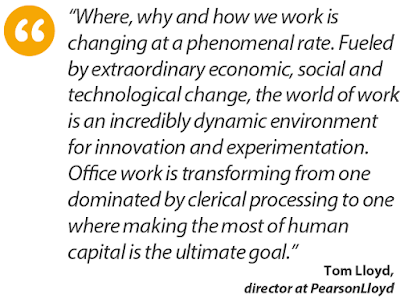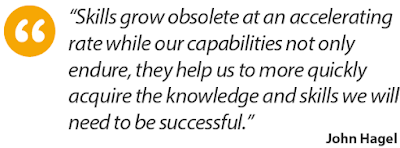
Workplaces are changing. In recent years, there’s been a lot of experimentation on workplace design, with a focus on collaboration, flexibility, and mobility. These changes have given rise to – or perhaps tries to answer the need of – a new breed of employees, the Independent and Autonomous Worker, as well as a new way of learning.
The Growth of Independent and Autonomous Workers
Three main factors drive the rise of independent workers.
| 1 | Flexibility. Rapidly changing market demands and technology require businesses to be more adaptable, while millennial workers want a flexible work setup. | |||
| 2 | Work/life balance. Millennials value their work/life balance and so want a career and workplace that allows them to achieve this goal. | |||
| 3 | Technology. People with skills can easily and cheaply connect with employers or businesses that need or want their skills through technology and platforms like Airtasker. |
The Challenges of Independent and Autonomous Workers
Today’s job market is dynamic, and skills are relevant for only about 5 years. For workers, this might require frequent transitions between careers and spells uncertainty.
But, for John Hagel, the challenge is beyond the acquisition of certain skills. He believes this way of thinking shows a static view of the world: Learning should be a lifetime pursuit. So, instead of wondering what skills to acquire, workers should ask: “What will help us to learn faster so that we can quickly acquire whatever skills are required at the moment?”

Training Independent and Autonomous Workers
To combat the uncertainty of the job market, workers need to develop the ability to re-learn. According to futurist Alvin Toffler, “The illiterate of the 21st century will not be those who cannot read and write, but those who cannot learn, unlearn and relearn.”
In addition, I believe we should help learners acquire capabilities that drive learning. For Hagel, core capabilities include critical thinking, emotional and social intelligence, curiosity, imagination, and creativity. These capabilities will help learners determine context and the appropriate skills necessary to succeed in those contexts. Whereas skills will become obsolete over time, capabilities will endure.

Conclusion
Learners want flexibility in their career and workplace because they value their work/life balance, and they believe technology will help them achieve this goal. With the dynamic nature of today’s job market, skills have a shorter lifespan and will become obsolete sooner than later. To avoid this eventuality, workers must cultivate their ability to re-learn and develop capabilities, like critical thinking and curiosity. These two things will be key to staying relevant in the job market of tomorrow.
References
Adi Gaskell. The Changing Shape of the Modern Workplace. Forbes, August 15, 2016
Lindsay Kolowich. The Future of the Office: 7 Innovative Ways Companies Are Changing the Workplace. HubSpot, updated August 9, 2017
Peter Schwartz. The future of work: Technology, jobs and augmented intelligence. Salesforce blog, October 8, 2017
John Hagel. Mastering the Learning Pyramid
Alvin Toffler
Tip #176 – Build a Culture of Critical Thinking for Learning Breakthroughs
Ray Jimenez, PhD
Vignettes Learning
“Helping Learners Learn Their Way”

